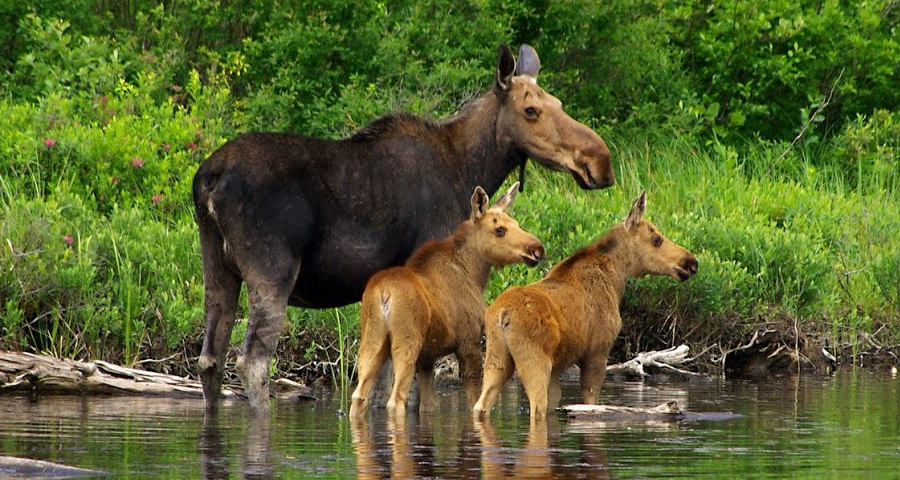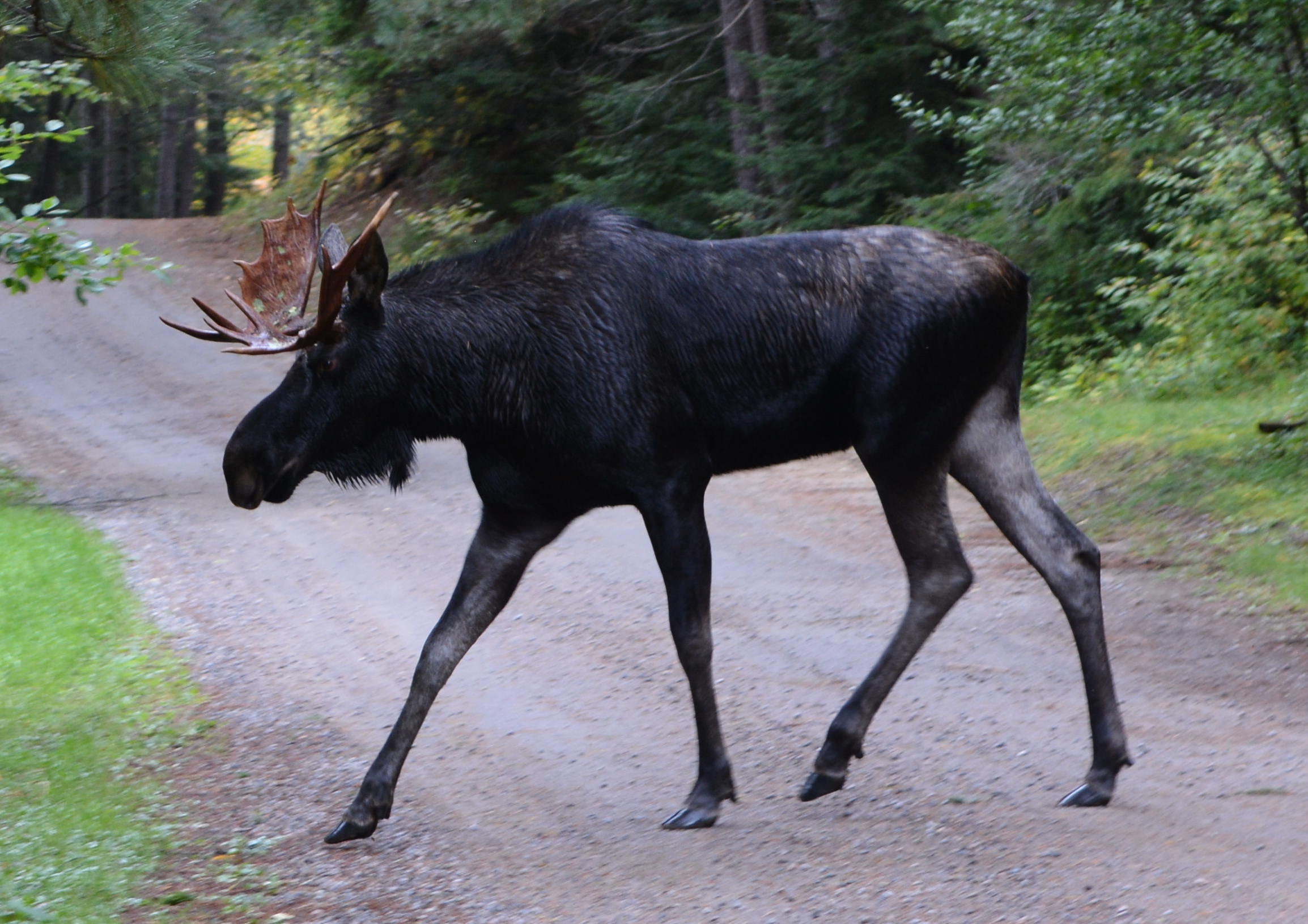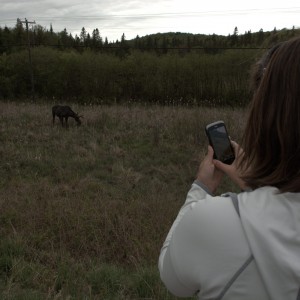
Spring Moose Encounters North Of Toronto
It’s the quintessential Canadian animal: huge, strong and yet mostly placid, gliding its way with surprising agility for its size through the equally iconic wilderness just north of Toronto.
The moose (Alces alces, largest member of the deer family) is declining in population but experts estimate there are still somewhere between half a million and a million moose in Canada. That makes it quite possible to see one in the wild, if you know the best place and time to look.
Here’s a tip: your best chances of viewing a moose are in Ontario’s Algonquin Park, and the best time is in May and early June, during the evening around dusk, or, better still, the two or three hours after dawn.
 Why? Along the Highway 60 corridor through the south end of the park, moose come to lap up road salt from the pavement or shoulder once the snow has melted, as their winter diet is salt-deficient. It’s not uncommon to see half a dozen of these magnificent animals when driving the whole corridor at the right time. (Once, when I was on a road trip through the park, I spied eight moose on the way through and three more on the way back!)
Why? Along the Highway 60 corridor through the south end of the park, moose come to lap up road salt from the pavement or shoulder once the snow has melted, as their winter diet is salt-deficient. It’s not uncommon to see half a dozen of these magnificent animals when driving the whole corridor at the right time. (Once, when I was on a road trip through the park, I spied eight moose on the way through and three more on the way back!)
The Art of Encountering Moose Safely in Algonquin Park
Here are a few tips to ensure you have a safe moose encounter, especially when you are pulled over on a highway to spot one.
Easy on the gas pedal: that gives you more time to react if a moose or other animal crosses in front of you. Besides, you have a better chance of spotting one, or other wildlife, and the scenery in Algonquin Park is totally worth slowing down for.
Watch for “Moose Crossing” signs: Your best clues for where to spot moose. When the sign says “Moose crossing next 40 km,” stay alert, watch up ahead, and keep an eye on the shoulders too.
Night vision: At night, always use your high beams and look for flashes in the dark that look like miniature lights but don’t stay in the same place, or suddenly disappear. These lights may actually be the eyes of animals, so slow way down, especially if the flashes are high off the ground.
More Great Tips
If someone in front of you slows down for no apparent reason, or is stopped by the side of the road with hazard lights flashing, slow right down yourself and creep forward, keeping your eyes peeled while your passengers get their cameras ready. Chances are the other driver has spotted some wildlife, and in spring it may well be a moose.
Same if someone coming the other way flashes their headlights. If you’re lucky you might even encounter a “moose jam”—a traffic jam caused by one or more attention-loving moose enjoying the adoration of humans.
Always remember: If you stop to view a moose, pull right over onto to the shoulder and turn on your flashers.
Moose are peaceful animals and unlikely to attack, so feel free to get out of your car to get closer and shoot stills or video. However, if the animal flattens its ears along its body, that’s a warning that you’re too close. Take a few steps back and respect them in their natural habitat.
Enjoy viewing one of the most amazing creatures in Canada.
To plan your visit to Algonquin Park and the wilderness north of Toronto, click here.


